How to Make Homemade Sauerkraut In a Mason Jar
Homemade Sauerkraut in a Jar is one of the easiest recipes to make. It only takes three simple ingredients: cabbage, salt, caraway seeds, a quart mason jar, and a week for the fermenting process.
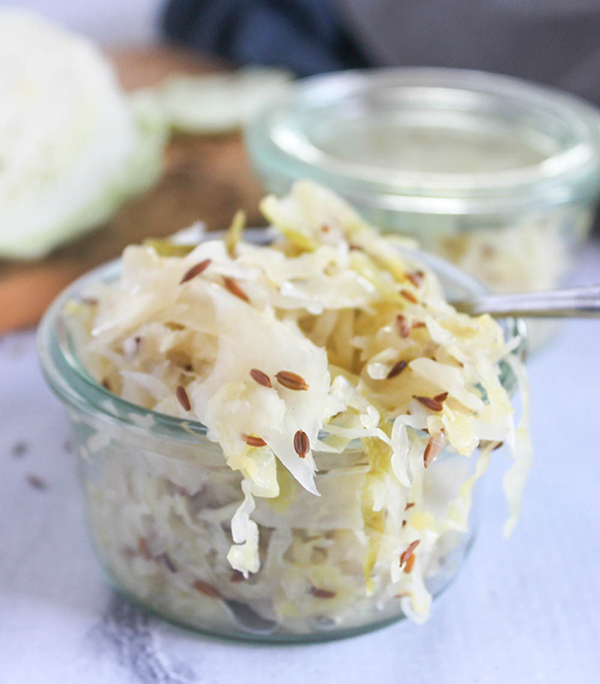
Want to Save This Recipe?
Enter your email & I'll send it to your inbox. Plus, get great new recipes from me every week!
By submitting this form, you consent to receive emails from Simple and Savory
Sauerkraut is the unsung hero of condiments! Its tangy flavor makes it perfect as a side dish, or condiment for sandwiches and salads. I never even considered making it myself until someone told me how easy it is to make your own sauerkraut. And the best part is that homemade fermented sauerkraut tastes so much better than the processed packed sauerkraut from the grocery store.
In addition to being delicious, fermented sauerkraut is healthy! It contains probiotics and nutrients that benefit immune health. The fermentation process creates lactic acid bacteria (probiotics ) which are good for your gut health. You can read more about all of the benefits of home-fermented sauerkraut in this article.
Why you will love homemade sauerkraut
- It’s easy! You only need three ingredients to make fermented sauerkraut.
- Homemade sauerkraut has health benefits; fermented food contains lactobacillus bacteria (good bacteria) which supports gut health and your immune system.
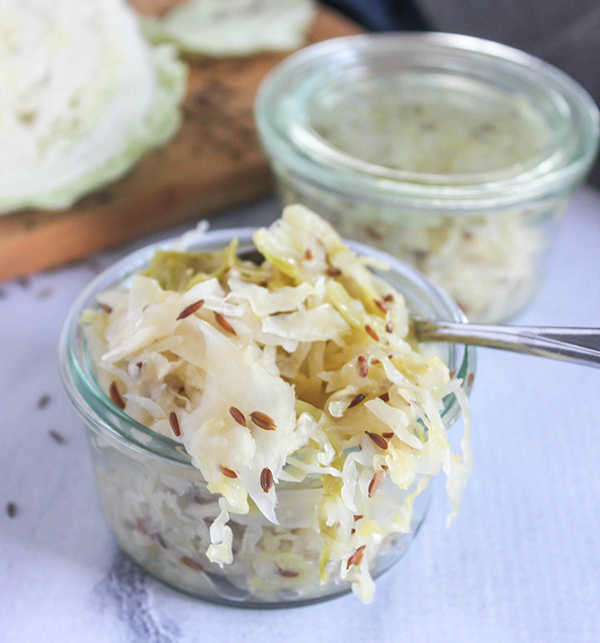
Here is what you will need
This is a brief summary of the ingredients needed to make this homemade sauerkraut recipe and a convenient shopping list from my Instacart affiliate link. For a printable recipe card with exact measurements and detailed instructions, scroll down to the recipe card section.
As an Amazon Associate, I earn from qualifying purchases.
Ingredients
- Raw Cabbage
- Fine Sea Salt
- Caraway Seeds (optional)
🥄Equipment
- Wide mouth one-quart jar
- Chef’s Knife or mandoline slicer
- Large mixing bowl
How to make sauerkraut in a jar
Prepare the ingredients: Clean and dry a one-quart jar using hot water. Rinse a head of the cabbage, remove the outer leaves of the cabbage and set them aside. Use a sharp knife to cut the cabbage into 4 wedges. Then slice each wedge of cabbage into ribbons. You can also use a food processor with a slicing disk or mandoline slicer for this.
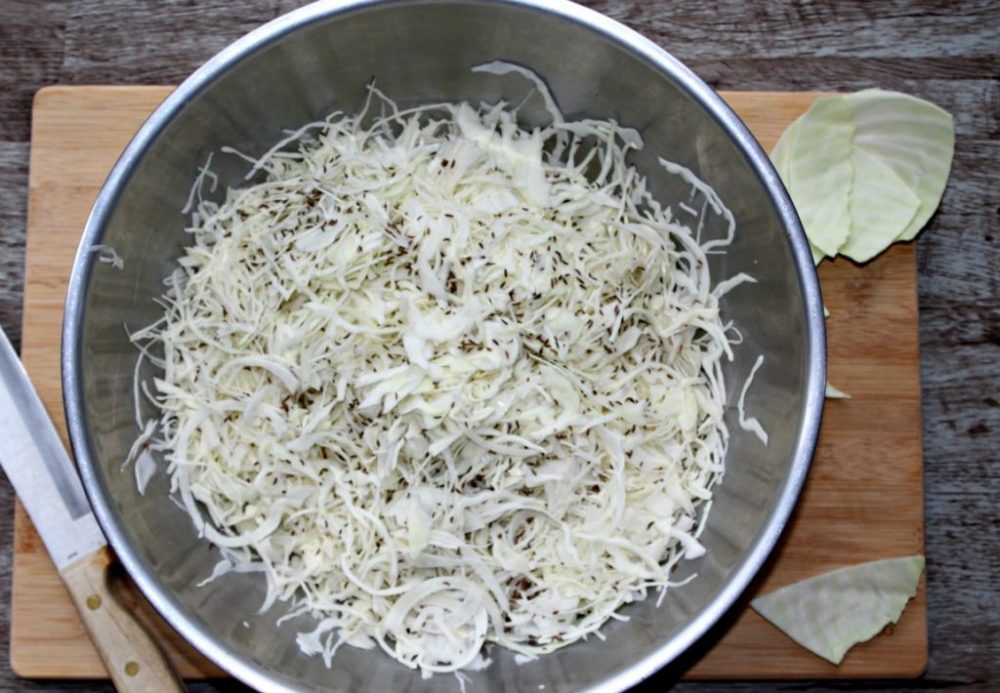
STEP 1: Place the shredded cabbage into a large bowl. Sprinkle sea salt on top of the cabbage in the bowl. Let it sit for about 10 minutes, then gently massage the cabbage with clean hands for a few minutes until the cabbage begins to release liquid, stir in the caraway seeds.
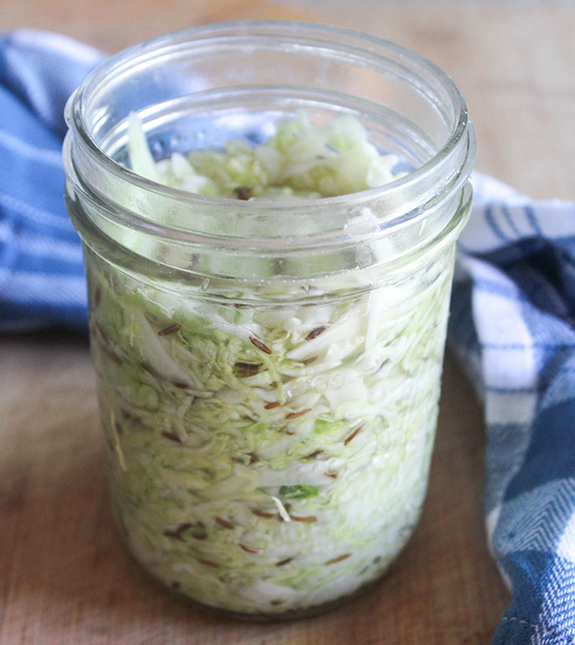
STEP 2: Stuff the cabbage into a clean jar pressing down as you go. It may seem like all of the cabbage won’t fit, but it will.
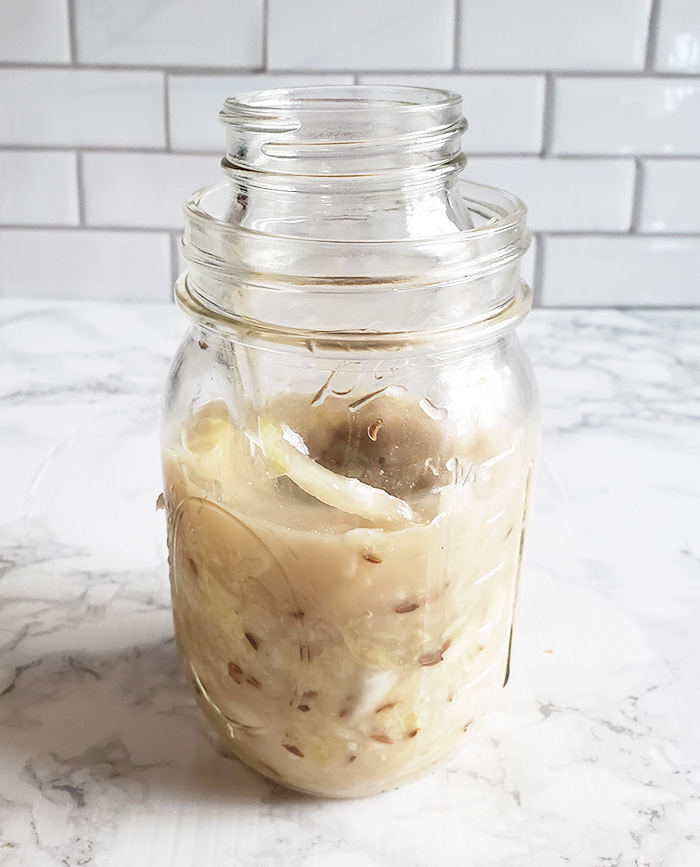
STEP 3: Once the cabbage has been packed into the glass jar; use a smaller jar or cup to press down the sauerkraut. Store the jar loosely covered or with cheesecloth on top of the jar at room temperature and away from direct sunlight for at least 5 days. This will allow for the fermentation process.
Each day while the cabbage ferments, press down on the smaller jar or cup to make sure that the cabbage is submerged in the brine. After a few days, you should notice air bubbles forming which is perfectly normal. That is part of means your sauerkraut is fermenting.
Note: The jar may not completely fill up with sauerkraut, and that’s okay. It’s more important to press it down and be sure the cabbage is completely covered with the brine.
Ingredient notes and substitutes
The complete list of ingredients to make this recipe is above. Below are notes about some of the ingredients, along with ideas for substitutes.
Cabbage – Green cabbage works best, mainly because of its moisture content. Try to choose fresh organic cabbage from a farmer’s market when it’s in season; it contains more water, which will help with the brine. Nappa cabbage is a little more delicate, but can be substituted for green cabbage.
Fine Sea Salt – Himalayan or Celtic sea salt is type of salt I use to cook. look for fine sea salt instead of coarse, it will break down easier. Sea salt it can be substituted with kosher salt if sea salt is not available. Do not use salt with iodine to ferment. Iodine can inhibit the growth of beneficial bacteria.
How to store homemade sauerkraut
Once the sauerkraut is fermented, store it covered in the refrigerator for up to six months.
How to use homemade sauerkraut
Keep a jar of sauerkraut in your fridge and add it to salads, sandwiches, and roasted meats, top your turkey burgers with it or make baked sauerkraut with apples.
Our favorite way to enjoy homemade sauerkraut is with pork chops.
How to cook homemade sauerkraut
Fermented sauerkraut can lose its probiotic benefits if cooked at high temperatures. To keep the healthy bacteria alive, it’s best to enjoy your homemade sauerkraut raw or lightly heated. So, if you want to preserve the healthy bacteria, don’t cook sauerkraut over high heat and try to keep it under 115 degrees F (46 Degrees C). You can also add your sauerkraut as a topping to dishes after they’ve been cooked or enjoy it as a cold side dish.
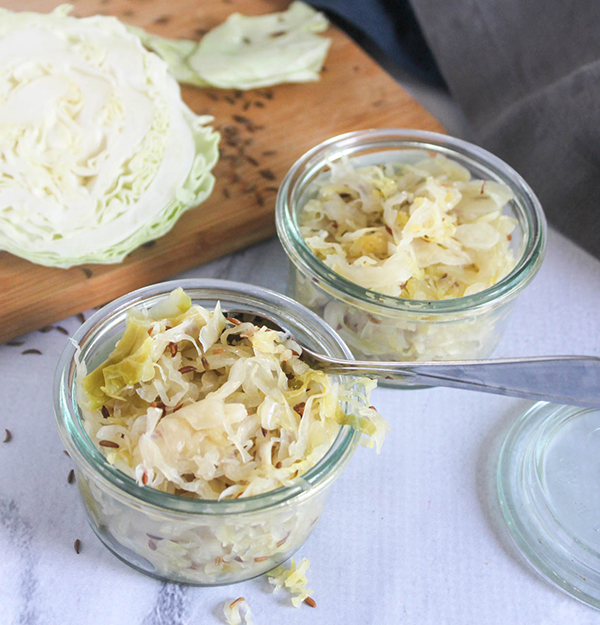
Variations
This is a basic sauerkraut recipe. It can be adapted to your tastes, here are a few suggestions.
Green and red cabbage – Use a combination of red and green cabbage for a colorful version of sauerkraut.
Add veggies – Flavor your sauerkraut with hearty veggies such as shredded carrots, beets, or kohlrabi.
Spicy sauerkraut – Add one to two cloves of chopped garlic and a teaspoon or two of diced jalapeno peppers.
Tips
- This recipe is for a small batch of homemade sauerkraut. You can easily double this recipe to make more.
- Add extra weight to the small jar with packed cabbage with a few marbles or you can get fancy and use these glass fermentation weights.
- If there is not enough brine, and the cabbage seems dry after being massaged with salt, make a brine to add to the cabbage – mix together a cup of water and 1 teaspoon of salt.
- Before touching the cabbage to make sauerkraut, make sure the jar is sterilized and your hands are clean to avoid contaminated sauerkraut.
- If the sauerkraut feels slimy or has a foul odor, toss it out.

Grab your Free copy
Speedy Supper Solutions!
Get dinner on the table fast with these ideas.
Recipe FAQs
No, you don’t need to drain the brine from the sauerkraut, unless it is overly moist, or if you prefer your sauerkraut dry.
One tablespoon should be enough salt for a 1 1/2 pound of cabbage, which is what a small head typically weighs. If you are using a larger head (medium-sized cabbage) or prefer more salt, add a little salt (up to a teaspoon).
Do you like this recipe or have a question?
Please leave a comment or question and a 🌟🌟🌟🌟🌟 rating below. I answer all questions!
You might also like these recipes

Click on serving size to scale this recipe
Equipment
Ingredients
- one medium to large head of cabbage
- 1 tablespoon sea salt
- 1 tablespoon caraway seeds
Instructions
- shred the cabbage using a food processor or mandolin slicer and place it into a large bowl
- sprinkle the cabbage with sea salt and set aside for about 10 minutes to allow cabbage to release water
- once the cabbage starts to release water, use your hands massage the cabbage for a few minutes to expel more water
- stuff the cabbage into a wide mouth 1-quart mason jar pressing down with your hands as you go
- once all of the cabbage is in the jar continue to press until liquid covers all of the cabbage
- place a smaller glass or weight onto the top of the cabbage
- cover the jar loosely and allow it to sit at room temperature for 5 to 10 days.
- NOTE: fermentation will happen faster in warmer temperatures and it will take longer in cooler temperatures
Notes
- Use red cabbage in place of green cabbage or use a combination of both
- Add 1 to 2 shredded carrots to the cabbage
- Add 2 cloves of chopped garlic or jalapeno peppers
Nutrition
Nutrition information provided is an estimate and can vary based on cooking methods and ingredients used

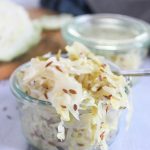
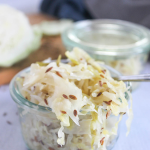

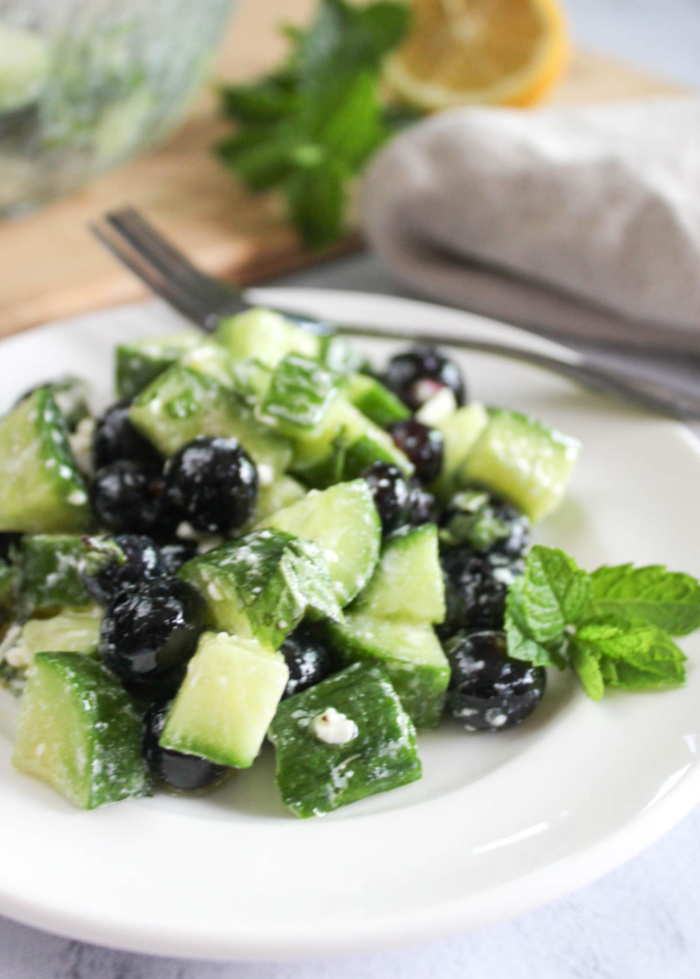
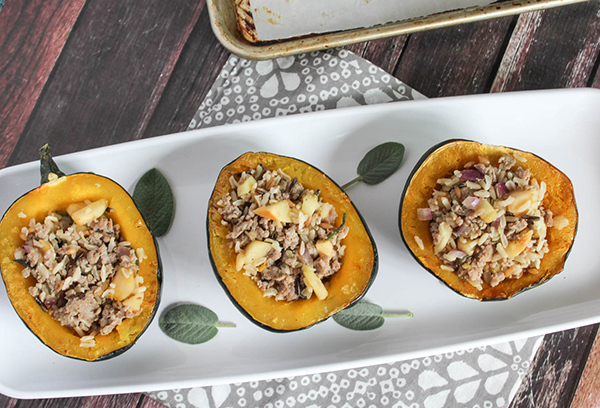
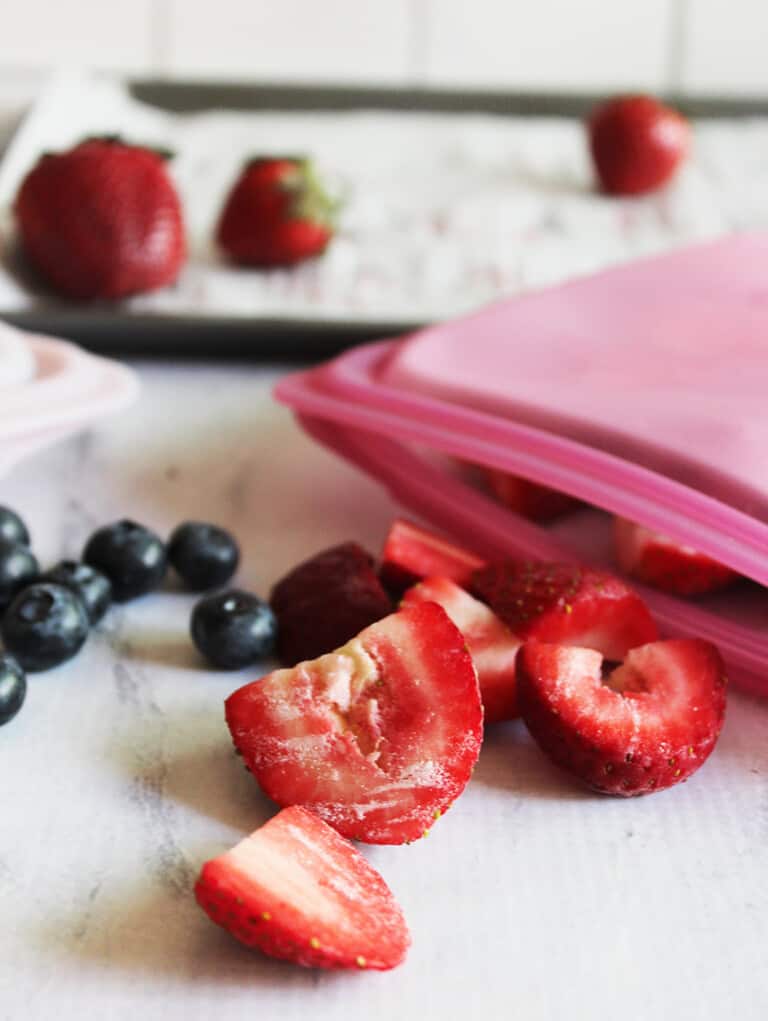
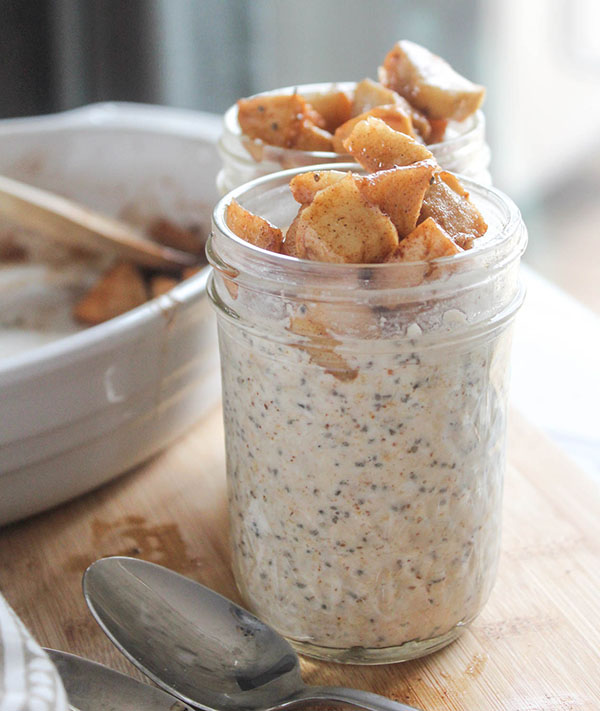
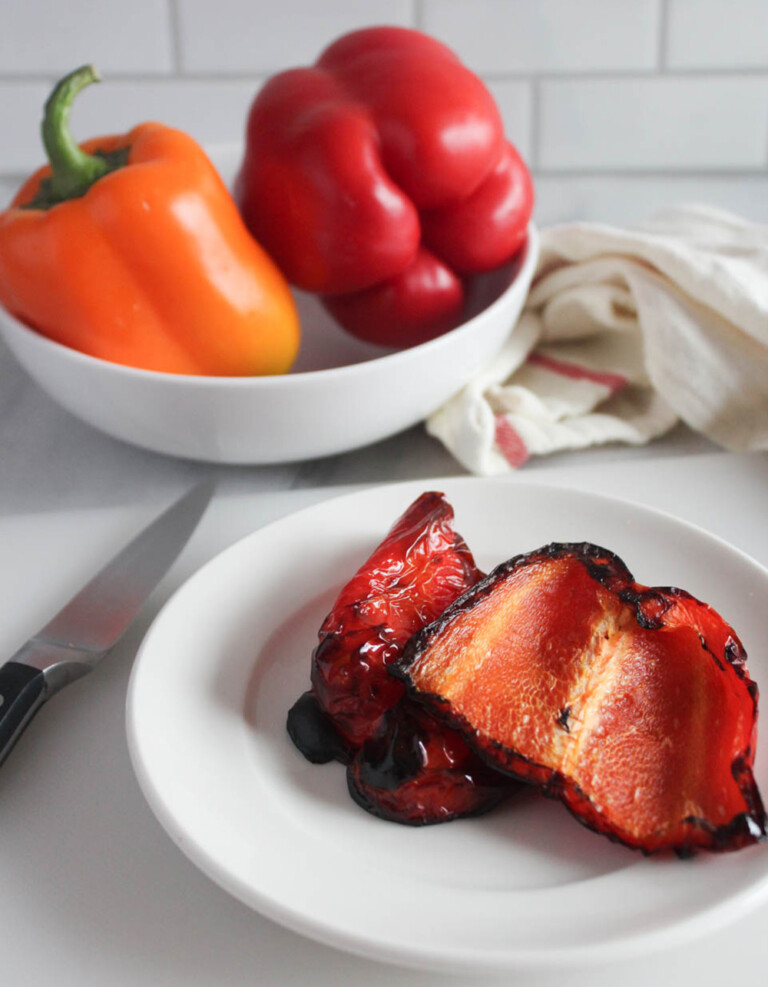
I love sauerkraut, but never really thought to make my own. I need to try this!
I love how quick and easy this is!
Thank you! t’s very easy and delicious!
My husband would love this.
I often wonder about making sauerkraut but it most seem to make incredibly huge amounts. This seems a lot more manageable and lie the idea if making it straight in the jar.
I will save this recipe because I want to make my own sauerkraut. Looks super simple & easy.
I love sauerkraut and making your own using fresh cabbage.is incredible. So tender and fresh and an easy recipe to follow.
I am Ukrainian and LOVE sauerkraut ! I can’t believe it took me this long to make it myself!!
Making this and adding garlic for garlic sauerkraut which i had once from a garlic festival and it was amazing! I have been thinking of trying to make my own kraut for 2 years, now I will TY!
I love that idea, garlic will be in my next batch!
I made my first batch of homemade sauerkraut and this recipe was so easy~
I set ours in the garage to ferment since the temperature was a bit cooler out there. I checked it after 7 days but decided to leave a bit longer and brought it in after about 2 weeks. My husband loves the flavor and crunch–this is just the best.
We have already enjoyed it with German Brats and loved it. I will be making this again…saving this recipe as one of the “keepers”. Thank you so much!
You are welcome Alice, I’m happy to hear that you like it!
Could I leave out the caraway seed?
Hi Eileen! Yes, you can leave out the caraway seeds.